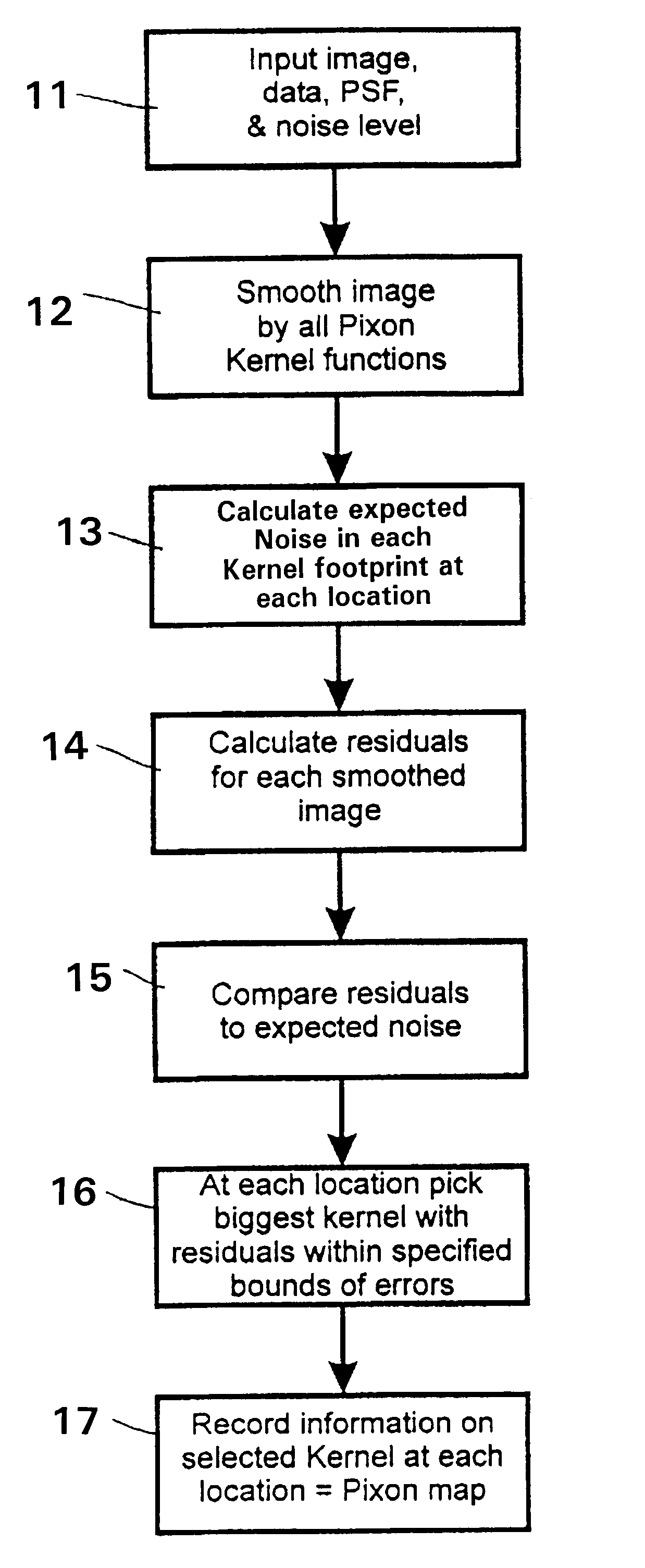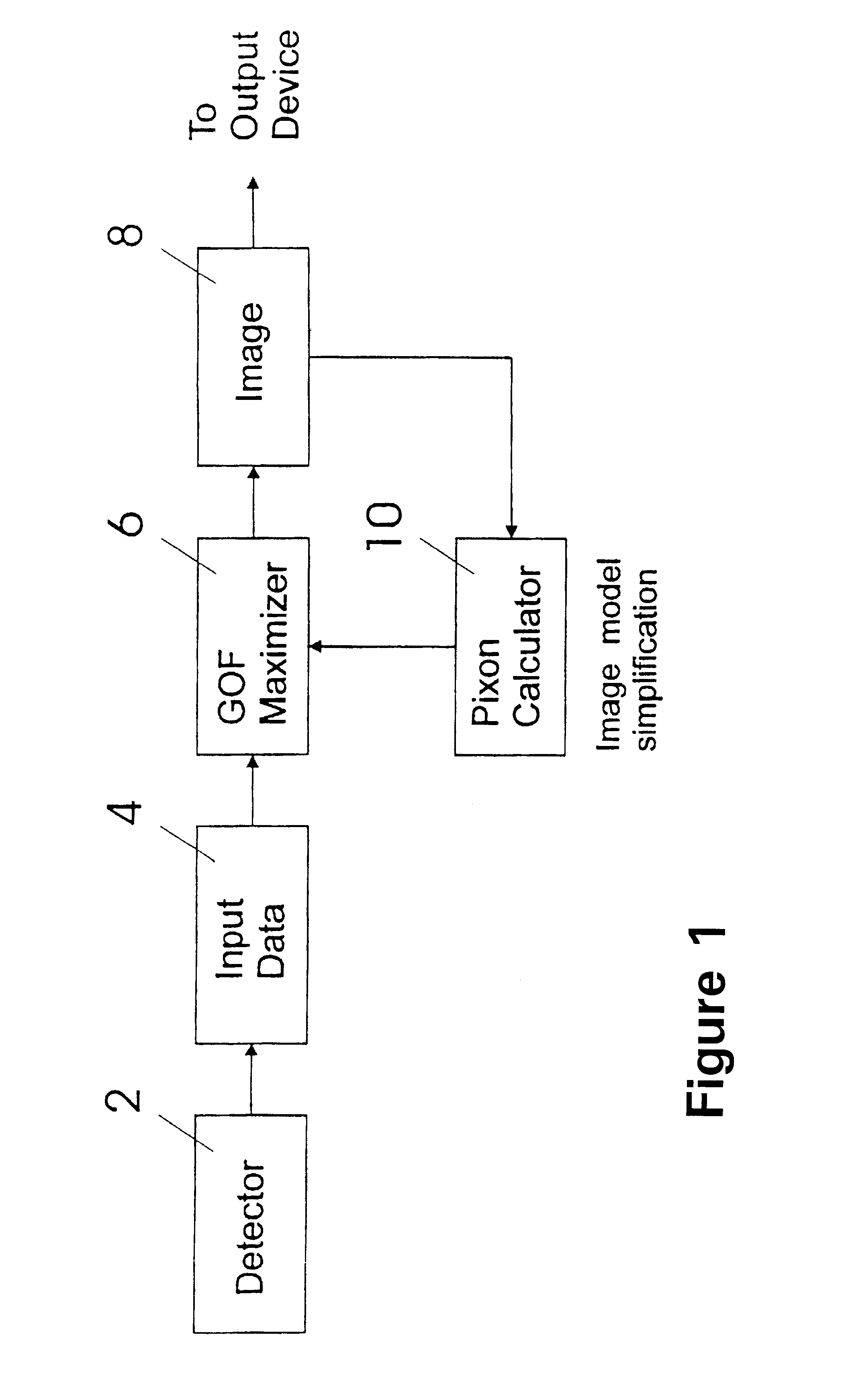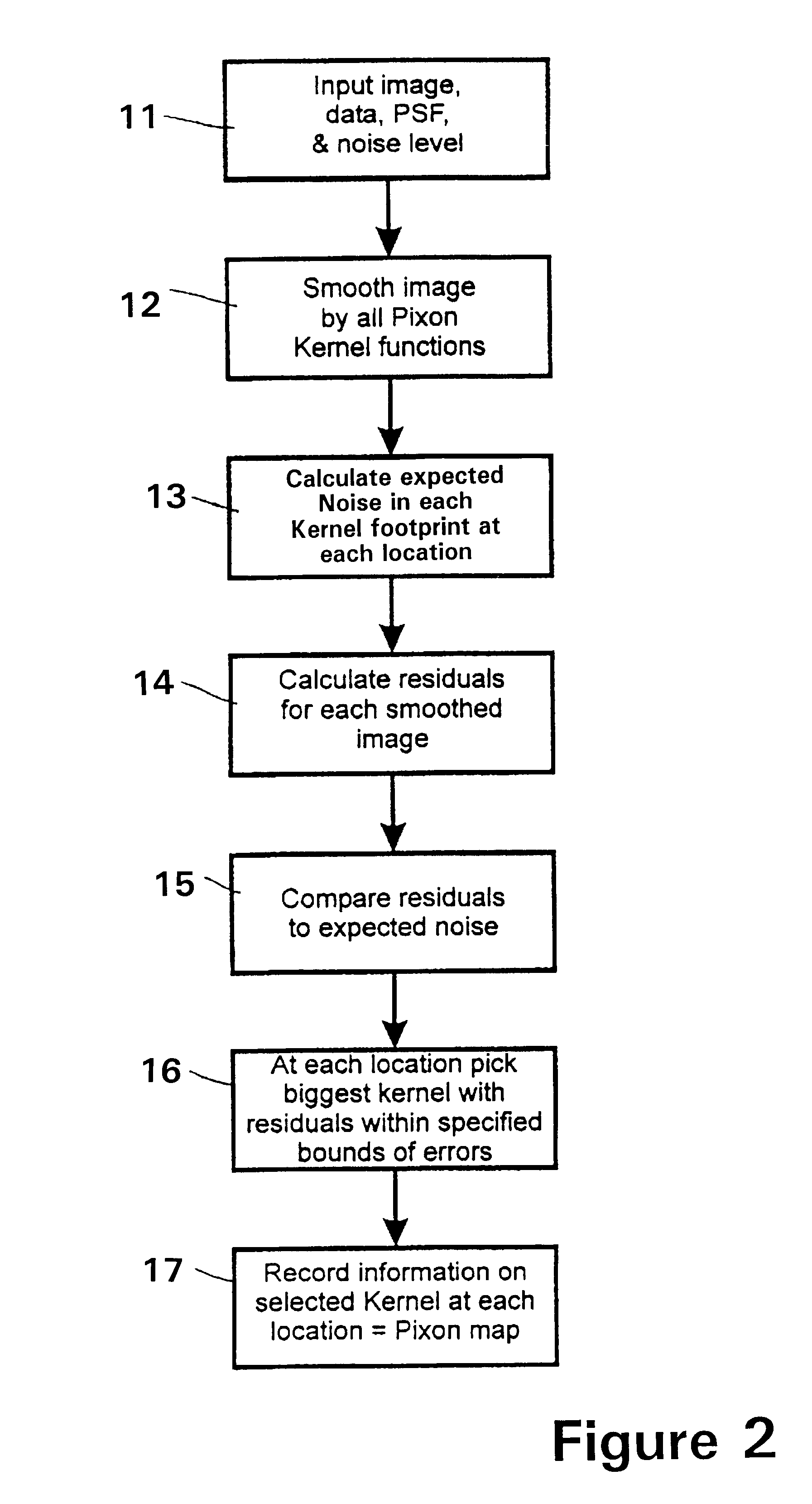Accelerated signal encoding and reconstruction using pixon method
a signal encoding and signal technology, applied in the field of signal encoding and reconstruction, can solve the problems of reducing the computational speed of image reconstruction, and only approximating the measurement accuracy, so as to reduce the complexity of image models, accelerate the computational speed of image reconstruction, and minimize the number of parameters
- Summary
- Abstract
- Description
- Claims
- Application Information
AI Technical Summary
Benefits of technology
Problems solved by technology
Method used
Image
Examples
Embodiment Construction
[0034]In an imaging system, a CCD detector having a grid of N×N pixels is used to collect incoming photons from the light source to generate an input image. A computer is used to reconstruct the input image using the Pixon method, in which a statistical description is applied to the imaging process and the simplest image model is selected from all possible image models that fit the data to within a specified quality as determined by the selected GOF criterion. The model is determined through a number of iterations that progressively improve the fit and modify the complexity of the image model to find the simplest model having the specified fit quality. A key element in building the image model is decomposition of the image into the fewest number of parts and the selection of a set of basis functions (the components into which the image will be reduced), that facilitates image decomposition into a small number of units. These units are called “Pixon elements”, or “Pixon kernels”. The...
PUM
 Login to View More
Login to View More Abstract
Description
Claims
Application Information
 Login to View More
Login to View More - R&D
- Intellectual Property
- Life Sciences
- Materials
- Tech Scout
- Unparalleled Data Quality
- Higher Quality Content
- 60% Fewer Hallucinations
Browse by: Latest US Patents, China's latest patents, Technical Efficacy Thesaurus, Application Domain, Technology Topic, Popular Technical Reports.
© 2025 PatSnap. All rights reserved.Legal|Privacy policy|Modern Slavery Act Transparency Statement|Sitemap|About US| Contact US: help@patsnap.com



